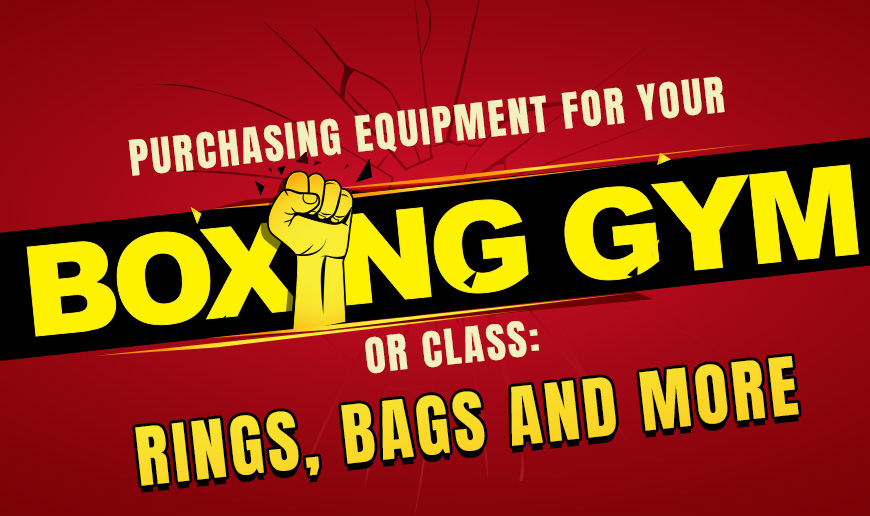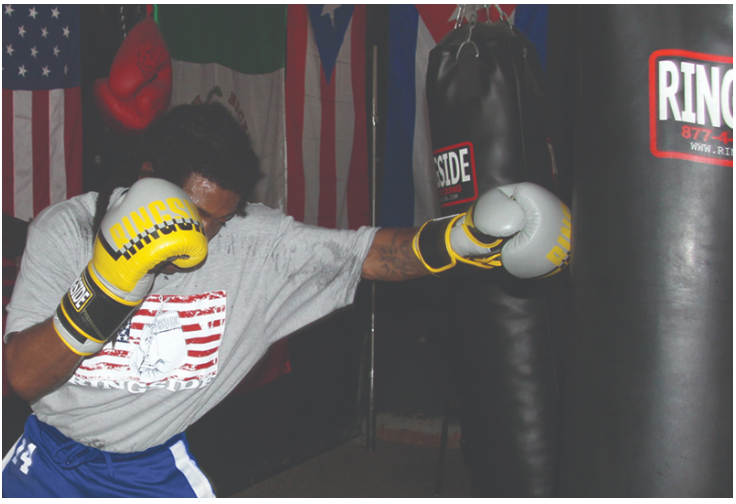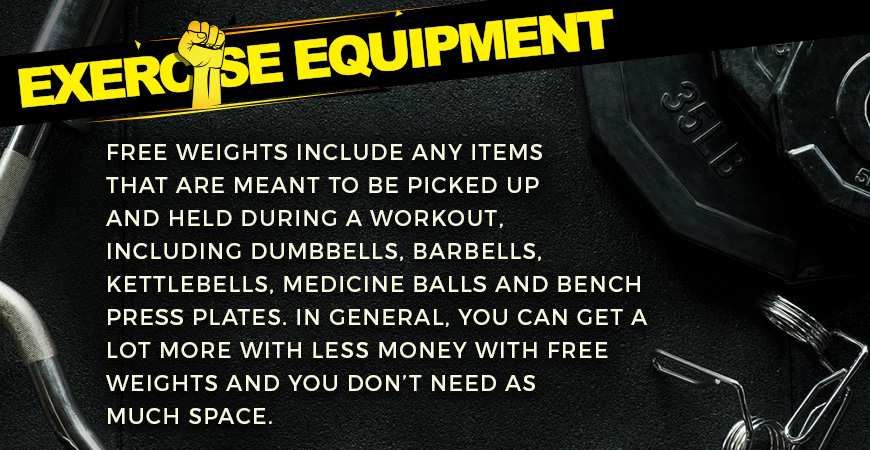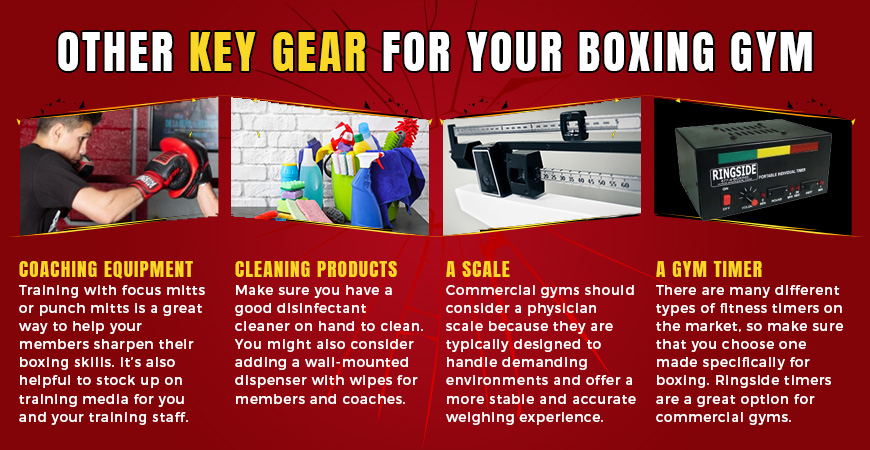
 If you’re considering opening up a boxing gym or hosting boxing classes at your fitness facility, you’ll need to choose the right boxing ring and training equipment. Building a viable training facility requires a substantial investment, so you want to make every dollar count. Choosing an established, high-quality brand that you can trust is a great idea. You don’t want to gamble on these types of products, especially if it’s an area where you lack experience.
If you’re considering opening up a boxing gym or hosting boxing classes at your fitness facility, you’ll need to choose the right boxing ring and training equipment. Building a viable training facility requires a substantial investment, so you want to make every dollar count. Choosing an established, high-quality brand that you can trust is a great idea. You don’t want to gamble on these types of products, especially if it’s an area where you lack experience.
Before deciding what to buy, it’s best to do a bit of research on what to look for in each of your boxing training equipment purchases. Fortunately, we’ve done a lot of that research for you already. We’ve taken years of boxing training experience and working with various brands of equipment to figure out what works best. Let’s go through several staples in boxing gyms and see how to pick the right products.
How to Choose a Boxing Ring
The core component of any proper boxing gym is a boxing ring. Sparring in a boxing ring allows your trainees to get accustomed to their environment and learn how to use it. A boxing ring is a finite space, so your students should learn how to corner their opponents and use the ring strategically. Conversely, they need to learn how to get out of the way and escape being cornered when they’re on the defensive during a match. There are a lot of ways that you can demonstrate these ideas, but it’s hard to train them without the ring itself.
- Ring Dimensions — With boxing rings, dimensions can vary depending on space available and the organizing body responsible. For example, the floor can be built level with the surface of the floor if your facility has low or standard height ceilings. Rings built for competition, however, have floors that are one meter off the ground. Of course, ring floors can be built to any height in between to suit the specific layout of your facility. For an authentic feel, though, you should try and get as close to a full height ring as possible.
- Side Length — Another boxing ring dimension that can vary is the side length. The boxing ring typically comes in dimensions of 16 feet, 18 feet, 20 feet, or 22 feet per side inside the ropes, with a 2-foot apron all the way around. Anything less than 18 feet per side between the ropes is not legal for competition, though, so keep that in mind when choosing the size of your ring.
- Floor Material — Canvas floor covers are standard, but other materials, like vinyl, are available. You want to look for a surface that is slip-resistant to avoid injuries or changes to the course of a bout due to a misstep. Some sort of padding is required beneath the floor cover. Look for thick, dense padding to provide maximum shock absorption.
- Ring Material — With any sport, you want to avoid any mishaps due to equipment failure, so make sure to pick a ring that is built solid. Stainless steel is a must. In fact, you want your ring to use as much steel in its construction as possible.
- Rope Height — While floor height and ring width are variable, ring rope height is set as specific intervals above the floor. These do not vary. Ropes must be one inch in diameter and placed 18 inches, 30 inches, 42 inches, and 54 inches above the mat. The ring posts that hold the ropes must rise 5 feet above the mat. Each corner of the ring, where the ropes connect to the turnbuckle, should be covered with a corner pad. Standard colors for these pads are one red, one blue, and two white.

A great boxing ring is the centerpiece of your gym and, perhaps, the largest investment, so choose carefully and choose wisely. You don’t want to skimp on a boxing ring. A quality product is going to run several thousand dollars, but, if you buy the right product the first time, you will save money by not having to replace it.
Punching Bags
Besides the ring, the punching bag is one of the most important things you’ll purchase for your gym. Here, we’ll go over some of the most basic types of punching bags, but if you’d like more in-depth information, please reference our buyer’s guide to punching bags, which goes into great detail about the many different types of bags.
- Heavy Bags — You have several options with regard to heavy bags, many of which are available as either free-standing bags or the traditional hanging bags. Free-standing bags can be moved around your gym or facility to accommodate changing needs. Traditional hanging bags, on the other hand, will only be able to be used where you’ve set up a physical mounting location for them.Heavy bags offer adjustable weights that let you customize their amount of fill to your desired weight. The texture of the filling matters, also. Aim for soft shredded textile filling. This material makes a more comfortable striking surface, which helps reduce the incidence of sore knuckles while reducing the impact on the joints.Make sure that the bag has a decent range of heights so that all trainees and guests can find the right settings for themselves. Free-standing bags typically have multiple height adjustments built into the central post. Hanging bags typically don’t need as much adjustment, but can be raised and lowered by altering the length of the chain.

- Grappling Dummy — If you plan on putting together a hybrid boxing/MMA gym, you want to consider picking up a grappling dummy/punching bag combo. These are basically grappling dummies that can be supported vertically (by either mounting in a floor stand or hanging from the ceiling), and they serve as great tools for both sports. They provide the trainee with an anatomically accurate target. For grapplers, this is especially useful because it allows them to mix up strikes (jabs, elbows, kicks, etc.) with clinches. If they want to work their ground game, they can simply lift the dummy off of the stand and lay it down to work on submissions or ground and pound drills.
- Speed Bag — A speed bag is another boxing training implement that no club or gym should be without. They help to develop speed (obviously), hand-eye coordination, and rhythm. You will find plenty to choose from, but remember that speed bags require two components: the bag itself and a platform to hang it from. You need a strong, steel-reinforced mounting platform to withstand the blows it will take.
Virtually every platform (the part that anchors the bag) will be constructed from wood, and that’s perfectly okay. Aim for chain link bearing swivels to connect the bag to the platform, as opposed to plastic or other materials. Some platforms are adjustable and can elevate or drop, depending on the height of the trainee—choose this feature, whenever it’s available, over fixed platforms. With an adjustable setup, height is rarely an issue.
Exercise Equipment: Conditioning and Cardio
Building muscle and endurance are key needs for every good boxer, even if they never enter a competition There are three primary ways to address the strength equipment for your gym. You can purchase free weights, machines or a combination of both. There are pros and cons to each option and which route you take may be determined by your goal, your budget and what best suits your training philosophy. You’ll also want to add cardio equipment to the mix.

- Free Weights — Free weights include any items that are meant to be picked up and held during a workout, including dumbbells, barbells, kettlebells, medicine balls and bench press plates. In general, you can get a lot more with less money with free weights and you don’t need as much space. The primary downfall of this option is that they may be intimidating to some and aren’t as approachable or straightforward as machines, so teaching your guests safe, proper technique can take a lot of time. If you’re a serious boxing gym that primarily trains lifelong boxers, free weights are probably just fine.
- Lifting Machines — If you want to appeal to the general public and beginners, weight machines may be a better choice. However, because each piece of equipment focuses only on one part of the body, you need a lot more space for a full-body workout with machines. Of course, this also pumps up the price when you need to purchase lots of gear. However, machines can reduce the chance of injury (and therefore liability) and are much easier and quicker to learn.
- Cardio Equipment — We all know that building endurance is important in competitive boxing, so any good boxing gym should have a program to implement cardio. Adding a selection of cardio machines to the mix will help ensure that your members get a complete, full-spectrum workout in your gym so they don’t have to buy multiple memberships to several different gyms. Rowers, treadmills, ellipticals and stationary bikes can offer a good workout for everyone, from entry-level trainees to advanced competitors. These can also be very useful and precise tools for when it’s time to make weight.
Other Key Gear for Your Boxing Gym
The big equipment isn’t the only thing you need to succeed in your fitness entrepreneurship journey. You’ll also have to think about the small, practical things that make a gym run smoothly, from the mitts to the cleaners to the scales.

- Coaching Equipment — You’ll need to outfit your coaching staff with gear to keep them sharp and engaging. Training with focus mitts or punch mitts is a great way to help your members sharpen their boxing skills. You can drill both offensive and defensive strategies on the mitts while helping students practice proper footwork and get a great workout. These should be a staple of every boxer’s training equipment. There are two types of punch mitts—traditional and glove-like. They’ll both work great for typical focus drills, but the glove-like will allow a coach to punch back at the student providing an increased level to the drills.As a gym owner, you should know a little bit about how to teach boxing. It’s helpful to stock up on training media for your reference and the reference of your training staff. These materials will help trainers find great exercise ideas and aid them in staying on track when building new programs. They will also help your crew tailor workouts and training sessions to specific clients.
- Cleaning and Care Products — Keeping all of your equipment squeaky clean is an important part of gym ownership and will help prevent the spread of skin diseases and infections that tend to fester anywhere there’s sweat. Make sure you have a good disinfectant cleaner on hand to clean your ring floor, punching bags and even gloves. You might also consider adding a wall-mounted dispenser with wipes so that members and coaches always have access.
- A Scale — Every boxing gym needs to have a reliable scale somewhere convenient on the floor. Whether you cater to competitors or casual boxers, the scale is equally as important. Commercial gyms should consider a physician scale (like the ones you see in doctor’s offices) because they are typically designed to handle demanding environments and offer a more stable and accurate weighing experience.
- A Gym Timer — Timers are also vital to the operation. There are many different types of fitness timers on the market, so make sure that you choose one made specifically for boxing applications. Ringside timers are a great option for commercial gyms.
More to Consider
So, there you have it! We’ve covered most of the essentials regarding equipping a boxing gym, but this article is not considered to be all-inclusive. There are other purchases to consider, but this is a great starting point. These are substantial purchases, so make sure to do your research and make informed decisions. Also, pay attention to what brands the professional circuits use —they have access to the best equipment. It’s safe to say that if they use a certain product or brand, there’s a great reason to do so. Good luck and train hard!


Thanks for this advice for buying boxing equipment. You mentioned that when it comes to getting a ring you should look at rings that has a slip-resistant floor material. I’m interested to learn if you should try the material yourself or if you should memorize what materials are slip-resistant.
If you’re purchasing a boxing ring from a supplier, then your best bet would be to have a conversation with the salesperson/technical specialist about the different materials available for flooring. Ask them to list the pros and cons of the different materials and especially highlight which materials would have the greatest slip-resistance.
If you are building the boxing ring yourself from scratch, then you might want to try a few different materials before making a purchase to find the one you like. I’d also recommend talking to trainers and trying out rings in boxing gyms in your area to get a better understanding of what’s available and what you might like.
We typically recommend the canvas material as it has the best “feel” in terms of ample traction.
This website really has all of the information I wanted about this subject and didn’t know who
to ask.
I’m in the early stages of opening a boxing/MMA gym in Delaware. The clients will be amateur and professional Boxers/ MMA, White Collar, Parkinson’s Patients, Families and Police. I come from a family of boxers /MMA. We have opened gyms in the past. This will be the largest and most comprehensive to date. I’m looking at the equipment to meet the diversity and the affordable options that you offer. I’m looking at rings, equipment, gear and branded products to sell. Thank you, Dave Tiberi